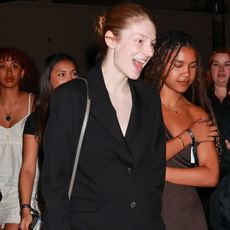Best Wardrobes in Britain: Caryn Franklin
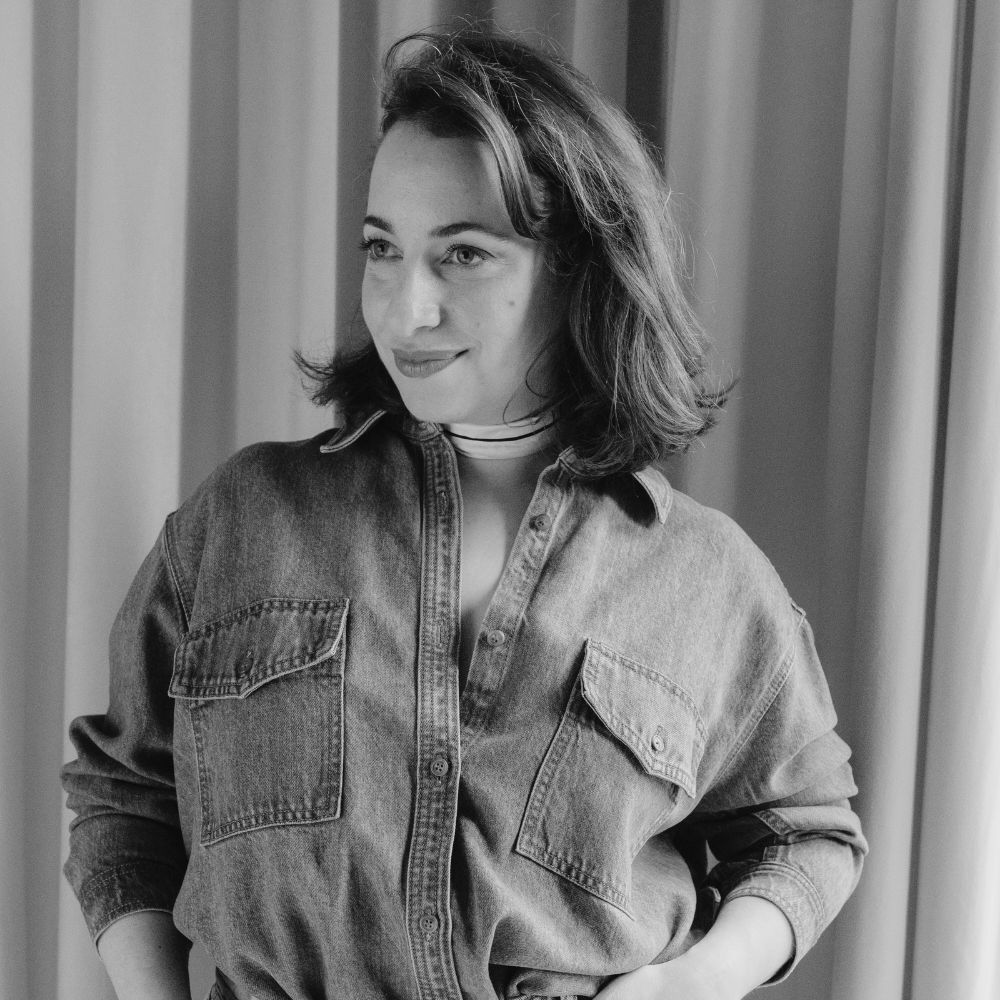
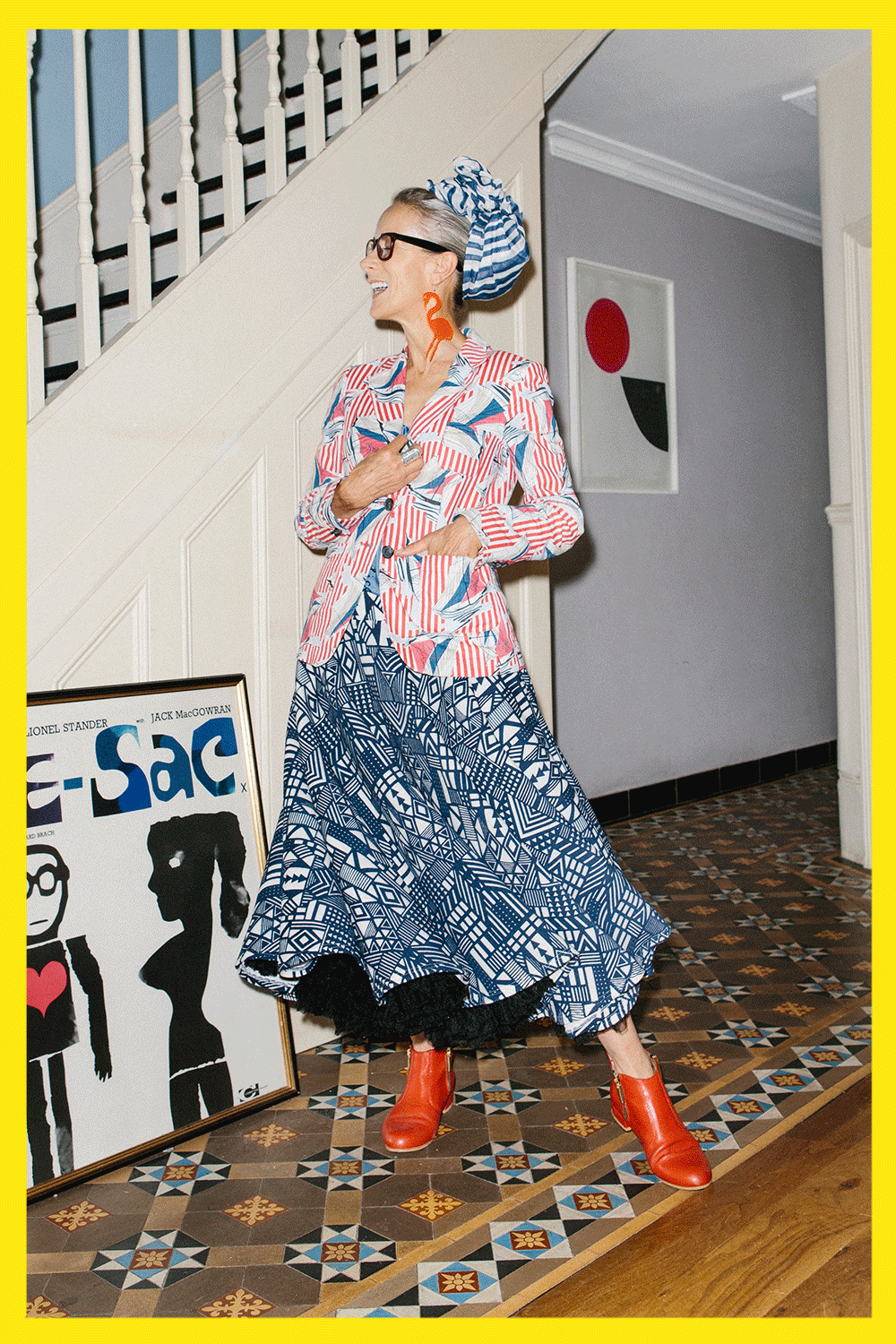
Welcome to the latest highly exciting instalment of Who What Wear UK's Best Wardrobes in Britain. It's where we do exactly what that title says on the tin: delve into the most fantastical, awe-inspiring and downright influential wardrobes in this fair country of ours. We're honing in on the women who cause the street style photographers to press their shutters as much as the characters you don't yet know—the ones who fly under the radar with secretly incredible clothing collections.
If you thought the slash generation was exclusively composed of millennials, then think again. Caryn Franklin, 59, is a professor, a journalist and editor, a stylist, a TV broadcaster, a producer, an author, a campaigner and activist, and with all of those combined, a particularly powerful force behind the fashion industry's long-overdue shift towards diversity and more sustainable practices.
She was an early influence on my own move into the fashion world: I grew up watching Caryn front the BBC's seminal style programme, The Clothes Show and became convinced that I wanted to be a part of this buzzy, creative, ever-changing scene. She's the blueprint for what it looks like to be intellectual and still just bloody love clothes, so in the lead up to her involvement in Graduate Fashion Week, we took the opportunity to jump into Caryn's closet to better understand the polymath behind the print-clash outfits.
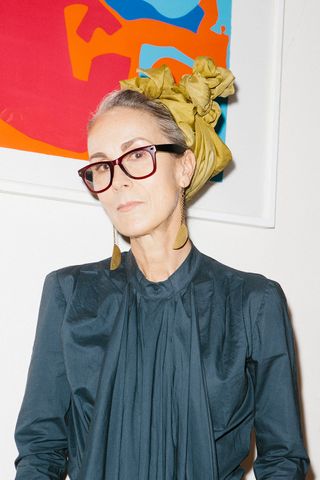
WWW UK: Do you have a first fashion memory?
CF: I was 14 and just fell in love with the most gorgeous pair of platform shoes in Petticoat Lane Market, and wanted to wear them to school day in, day out. I went to a comprehensive school and they were quite slack about a uniform. I used to have to cycle [to school], and one day my dad said to me, 'You know, you could get killed in those shoes' and I thought, That's a bit much, but what he meant was you can't cycle in platforms like that. But for me, it was like "the look" was everything, so I used to sneak them out in a plastic supermarket bag on my handlebars and then I would change two thirds of the way so that I would arrive at school in "the look," get off my bike and I'd have my footwear as I wanted it.
WWW UK: When did your interest in moving into the fashion industry begin?
CF: I'd always made my own clothes but I wasn't interested in designing, I was interested in magazines. So I did a graphic design course at Kingston [University], but I spent the entire time in the fashion department photographing and making my own projects. Then I went to Central Saint Martins and did the exactly the same—I did a lot more photography in clubs and things like that, and so with the body of work that I had, I went straight to i-D magazine and, you know, it was a very very small set-up, so it was useful that I was trained as a graphic designer.
We would go out clubbing all night, and I would go with photographer Steve Johnston, who had just done a punk book with Terry Jones (co-founder and former editor in chief of i-D), so he did all the photographs, but I would spot people and interview them, and then we'd get pictures back. Then I'd work with them on the pagination because, in those days, you actually sort of marked it all up as a big piece of artwork—there was no scanning, there was nothing. So that's when I knew I really enjoyed having an opinion about clothes. I've always had an opinion about clothes.
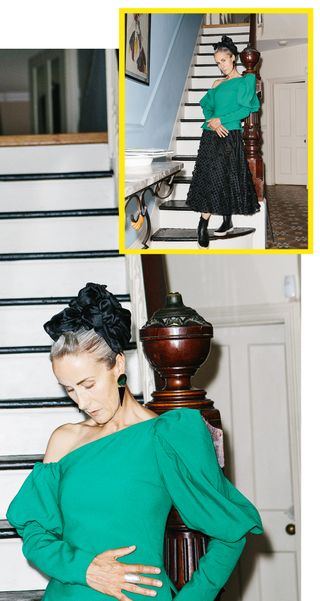
Caryn is wearing a top from Osman, a skirt from Kensal Vintage, earrings from a charity shop on London's Chamberlayne Road and Star Wars Storm Trooper sneakers from ethical and sustainable shoe brand Pozu.
WWW UK: Many dislike explaining their own style; how do you think your friends and/or family might describe it?
CF: That's even harder! Well, I've always called myself a "mannish woman," so I love brogues, trousers, specs, shirts and ties—that kind of look. I think they would probably agree that I'm quite a mannish dresser. I can't do girly—I've never really felt it resonates with me.
WWW UK: If (heaven forbid) you could only save one piece from your wardrobe, what would it be?
CF: Probably my studded leather biker jacket that I've worn consistently for nearly 40 years. I got it when I was at Central Saint Martins. Some studs are missing; I did some artwork on the back, and that’s all faded, but I just love that jacket. I'm going to a wedding in a month's time, and I will be wearing that jacket.
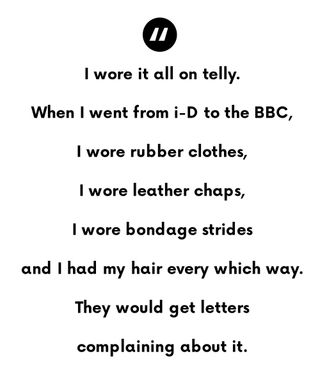
WWW UK: Has your look remained a constant, or do you dress differently now from those early i-D years?
CF: Funnily enough, I've come full circle. I wear similar things to what I was wearing in the early days in a way, like big, bold "notice me" shapes, but there was a period where I began going for other TV work and began to see that I could work in a different way. People would often go "Oh no, too fashion," so I sort of recognised (and also as you get older there's a really interesting space, as you manage your appearance for the "men in charge") there was a space in which I was very aware that I needed to do the "swingy hair."
I began going grey at 34—I had a big grey streak that grew through—and I was told "they've just been talking about you, you're looking too old and they're going to wind you down," so I was very aware of dying [the rest of my hair] dark. People always thought that the white bit was dyed, but the white bit was real. I have an event company and used to do a lot of stage work and live event work, and I said to my partner about 10 years ago, "I've had enough; I'm going to grow my hair out, and you do know that means we won't be employed to do [events], so we will need to be employing other presenters to do it." For me, it was about wanting to leave behind something and move into the next phase.
Related: Emma Watson's Stylish Guide to Shopping Sustainably
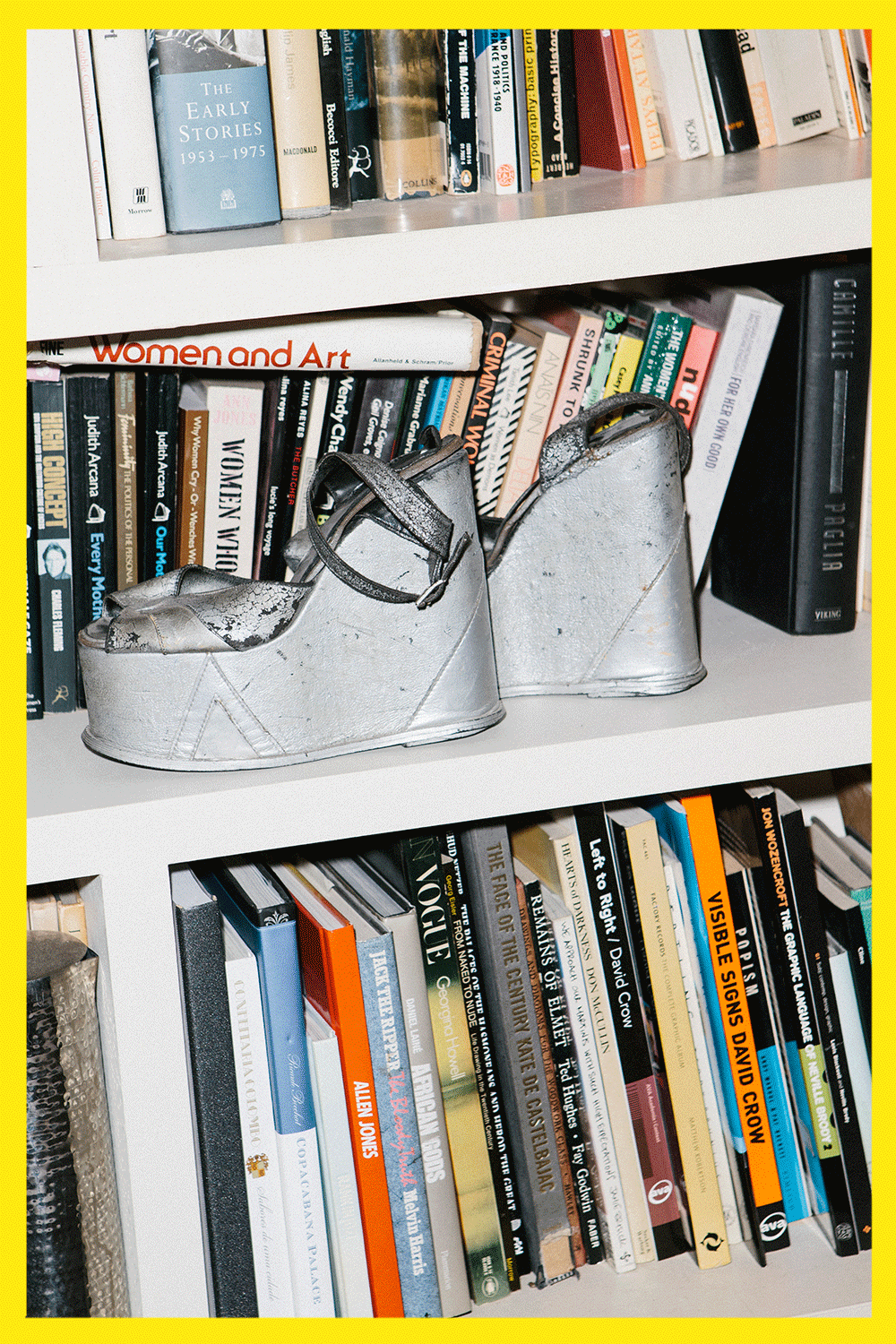
Caryn's shoe collection includes the platforms she wore aged 14, multiple pretty styles from Georgina Goodman (a shoe designer who tries to eliminate production waste wherever possible), as well as styles from Kurt Geiger and United Nude.
WWW UK: Do you feel like the tide is turning against those old-fashioned attitudes?
CF: I'd like to think that conversations I've helped start around showcasing a diverse spectrum of appearance in fashion—to take in age, racial heritage and body size—are beginning to see a shift. I didn't in my wildest dreams think we would see people with body difference on the catwalk. You might choose to call it a disability, but as I've wandered around the community, I've not wanted to use the word disabled.
All of the people I've seen with body difference are warriors—people like Jack Ayers, who has a prosthetic leg, or Kelly Knox, who has a missing forearm from birth, are brilliant body-image warriors. When we started All Walks Beyond the Catwalk 10 years ago, we were in a space in which we were saying not just emaciated thin white women [to be featured], but to take it through—like seeing Winnie Harlow, for instance—is amazing.
And again, never in my wildest dreams would I think I'd be modelling on catwalks! So last year I did Graduate Fashion Week and did the Teatum Jones show and some work for M&S. It's harder than it looks; actually, I'd rather leave it to the professionals, quite frankly. I'm happy walking on stage with a microphone because I'm about to tell you something, but just walking on stage to be looked at, that's really quite intense.
So I spent the entire time at GFW working out how to get my face. What do you do with your face when you're being a model? Those models make it look so effortless, but you've got to put your money where your mouth is, and I've been saying we've got to see older models. Now I happen to know there are some amazing agencies—like Mrs, Robinson or Grey—where there are some spectacular women.
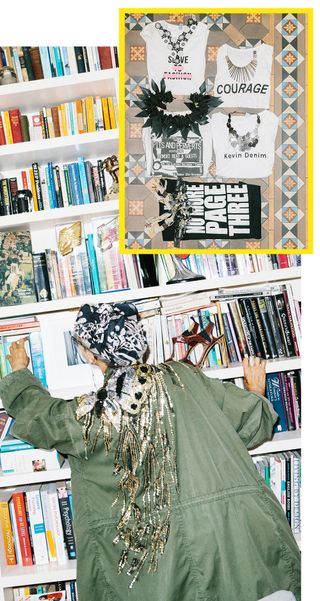
This decorative parka is from Reem Asaladi and the printed scarf is Gary James McQueen; Slogan and protest T-shirts are an important part of Caryn's important, as her statement necklaces.
WWW UK: "There's an emotional frequency to the clothes I wear" is such a great sound bite of yours—do you find that your mood chooses your clothes, or do you choose clothes to change or enhance your mood?
CF: I'd say both. So for me, clothes really do pulsate, and when I get inside them, I take on that energy. I know that when I pitch up and look the part, I am the part. What felt right on one day doesn't feel right the next day, and I can't say why. My youngest daughter is exactly the same, so we often have conversations about "feeling it."
I just know I'm hypersensitive to how things hang off my body, and I always have been. I'm hypersensitive to proportions, and visually I often find myself—and I've done a lot of personal styling over the years—calculating what that person is wearing or best proportions for them; I can't help it. I don't feel the need to tell complete strangers or judge them, so I'm not on the clock when people will say, "I knew we were having dinner with you, and I thought really hard about what to wear," and I think, Oh my god, that's a really damning thing that you think I might do that.
I'm a real people person; I'm just really thrilled to see that person and find out what’s going on in their life. To correct [the concept of fashion people instantly judging what you're wearing]: We're so not interested in clothes when we're off the clock. If someone says "Come shopping with me," my heart sinks. So my poor mother has been so underserved by me because I don't want to go shopping.
WWW UK: I've noticed throughout our shoot that many of your pieces have been adapted, upcycled, adjusted.
CF: I love a safety pin or two to change the proportions of the thing I'm wearing. I use ribbons to gather things in or hitch them up, and I change the hemlines with a needle and thread and use shoelaces to tie back straps, tie on my shoes or style my hair when it's in a plain ponytail. As a former stylist, I've always seen clothes as the basic canvas; it's what I do with them that matters.

Caryn has so many scarves that include vintage and secondhand pieces, as well as new designs from brands that intrigue her—after years of knotting and tying, she has this styling trick down to a fine art.

WWW UK: Looking back, would you impart any advice to yourself during the first part of you career, fashion-wise or otherwise?
CF: Style-wise, no, I wouldn't. I wore it all on telly: When I went from i-D to the BBC, I wore rubber clothes, I wore leather chaps, I wore bondage strides, I had my hair every which way, and they would get letters complaining about what I was wearing. I wouldn't give myself any advice about that. I wore it because it made me feel great, and I think as long as it's not offensive to anyone, I suppose I would broaden that for anyone: As long as it's doing the job you want it to do and you feel good, then it's great fashion and great clothing.
I think the word "fashion" has been appropriated by fast turnover retail and consumerism that somehow you've got to have an in-season look and then you get the label "fashionable." I disregard that completely because for me fashion is about self-styling; it's about taking what's out there—like we did in the '80s when there was no high street. You didn't have the diffusion brands working for Debenhams, you didn't have any value retailers where they access what was on the catwalk and turn it around immediately; we were much more naturally sustainable, and it was much more about slow fashion and supporting young designers, small labels, going to market stalls and then styling it up your own way to say your own thing.
We put a lot less interest in what was going on on the catwalk because there was a lot less catwalk imagery: You didn't see it for months, and we were much more interested in what was going on locally in the clubs we were going to. And that was how I experienced clothing and style, and my first experiences of catwalk shows were Bodymap, where they had their mothers and their aunties on the catwalk—amazing women with long grey hair—they also had their clubland friends of all different shapes and sizes, and there was great racial diversity. For me, the Bodymap catwalk set the standard forever on my idea of fashion.
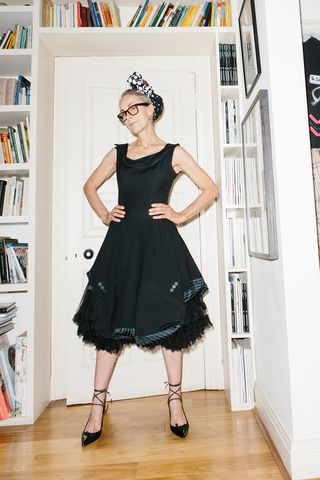
Caryn's little black dress is actually made out of two mens' tuxedo jackets by the now-defunct upcycling brand Junky Styling (you can still reach designer Annika Sanders if you are interested in commissioning a project). Caryn's shoes are Kurt Geiger that she has customised with laces to keep them in place; her headscarf was a present from her husband when he went to Tokyo; and her glasses are from Specsavers.
Of course, I was very excited when I thought expensive clothing was being democratised so that everybody could access it, and I was very excited to think that all the people that were buying into The Clothes Show (after a feature we’d get 26,000 calls about things). So I was very excited that we could feature a designer, a breaking designer, and then say you'll be able to get this in Debenhams, that felt right, but I didn't foresee the way things would speed up and the way that with manufacturing would just move right out of the UK, right out of Europe and right over to the other side of the world where people would be exploited. The worker and the wearer are connected by this emotional frequency for me.
Now I know what I know (we didn't know right at the beginning), I can't put stuff like that on and not make a connection with the despair that person must feel about the life they're living. I've travelled a lot; I've been to Dakar, I've talked to garment workers there (that was on the anniversary of the collapse of the Rana Plaza), and I've been to free-trade zones and talked to garment workers there in the Dominican Republic and listened to their experience of making clothes, and it's appalling. I suppose because I know that, and I know the hardship, I have to say to myself, Who made this garment, and how is it made? and so probably for that reason, I've slowed my consumption right down in the last 10 to 15 years. I buy from sample sales; I buy a lot more vintage and secondhand. I don't mind if I pick up something from the high street, but I'm not buying it firsthand—I'm not generating that demand; I'm choosing something that now has a life and needs another home to go to.

Caryn's bold jacket is made by Johann C Brun (a designer with Kenyan roots—often using fabrics and production there—who she found on a pop-up stall in Spitalfields Market) and she has clashed it with A Child of the Jago shirt, Vivienne Westwood skirt with a petticoat underneath, Georgina Goodman shoes and a Gary James McQueen scarf.
WWW UK: Are you seeing that young designers at Graduate Fashion Week are more aware of these topics than before?
CF: Across the board, we're discussing "considered design" and "emotionally considerate design." We've got to recognise that it's hard to tick all the boxes in garment production: the carbon footprint, the fair trade aspect and the ethical production around sustainable materials, and that can be really off-putting.
We know that lots of young designers would like to get to that point, but they have to make a start somewhere. This year—which I'm really pleased about—I will host a workshop around emotional intelligence and resilience. Because it's all very well being a disruptor or even a stealth disruptor, but you need resilience for that; you need to be able to feel that you can tackle these obstacles, and what we're seeing is the new generation of creatives feeling very undermined, with less confidence and more anxiety about their future than previous generations have felt.
As a disruptor, I felt I was coming up against so many obstacles that I took an MSc in applied psychology because I wanted to have a language that allowed me a certain sense of detachment. All my life, I've operated on instinct and feminism, and it didn’t serve me when I got to a CEO board, in which I was having to deal with dominant culture masculinity. I would struggle really to stay calm; I would get angry, so I've learnt tools for deconstructing behaviour and process, and also recognition of how to build resilience and develop emotional intelligence. I've learnt it the hard way after a long period of time in the industry, so I want to shortcut it for the next generation and give them the tools now.
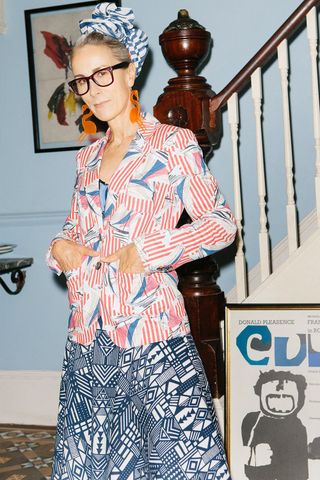
Caryn's print clash here involves a vintage Tommy Hilfiger jacket, a skirt from a market-stall dressmaker called Touche Boutique, old Russell & Bromley boots and earrings from Tea Party at the Zoo.
WWW UK: So your GFW involvement has changed a lot over the years?
CF: I've been involved from the off, really. It started over 25 years ago, and it was Jeff Banks [Caryn's co-broadcaster on The Clothes Show] who started it, so all credit to him. We were always talking about new designers, the next generation and we were often showing young designers in business to our [TV] audience. We also knew people were excited about a career in fashion so we wanted to show them the education and the training too. I remember interviewing Christopher Bailey as a student—his first interview—and I remember choosing not to interview Antonio Berardi and thinking later that was a massive mistake, covering Stella McCartney's graduate show and interviewing Kate Moss, who modelled for her.
Obviously over the years it's changed—I've been involved in different ways throughout that time, often presenting the finale show because that’s a time when you really want to acknowledge student creativity and the work that, the blood, sweat and tears and really give them an optimistic send-off—but also since 2010, I approached GFW to allow All Walks to host diversity talks with all of the tutors. We believe that if we're not teaching the next generation of creatives to pattern cut over and above a size 6, we're not serving them. If we're not teaching the next generation of image makers and stylists to work with bodies that are a different shape and to prioritise working with non-white, non-young, non-thin bodies—if we're not instilling that level of consciousness into them, we're just perpetuating what's already out there.
We did find people very receptive, and we did our Diversity Now competition from there, and it grew and grew and grew, and I got to the stage where I was getting up at 4:30 a.m. nearly every day to do the workload to do with All Walks and to balance earning a living and be a parent—and that's really important; often careers get talked about like there's no other life, and I have two daughters, so trying to deliver across—I just made myself ill. I thought it was superwoman, [that] I could work with five hours sleep regularly year-in, year-out, and my body had other ideas, so I sort of imploded.
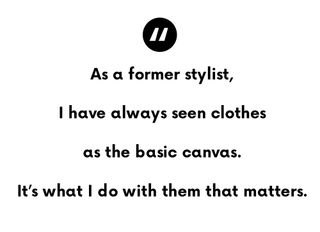
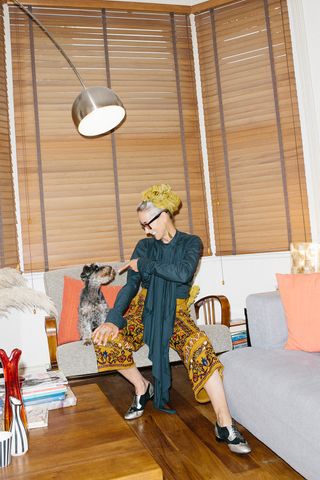
In Amsterdam, there is a shop created by AMFI (Amsterdam Fashion Institute) that stocks student-made pieces and that's where Caryn bought this blouse. Her trousers are from Camden Market, shoes from Somerset by Alice Temperley and earrings from the fair trade pioneers, People Tree.
WWW UK: Who are your latest new brand discoveries?
CF: I found a jeans range called Kevin Denim. It’s a great name—very '70s. It's run by a designer called Kyla O'Donnell, and it's a big social enterprise where she's making the jeans, and they're very comfortable and very good-quality denim. I think she sells globally, and with 50% of the profits go to cancer research because her father Kevin died very young—34, I think—when she was a small child, so she always felt that once she was in a position as a fashion designer to do something, that's what she would do. I've been co-chair of Fashion Targets Breast Cancer for 22 years now, and for me, and I know for many people, being able to put my money into something that has meaning is much more rewarding than putting my money into a large company where the CEO is paying himself a fortune and treating workers badly.
Sadie Clayton, I've worn her pieces; she makes great stage or red carpet stuff. I've known her since graduation, and I've worn quite a bit of her stuff, and I just really like her sensibility; I like the way she's a very agile creative. She does a lot of collaborations. It's not easy for anyone in this climate, and I just also like her can-do attitude. So we've become fashion friends, and I like to support her where I can.
I've been working with Gary James McQueen for a year now, and I just think he's a future visionary. In a way, at the moment, brands don't really know what to do with him, but he was a longstanding print artist for his uncle Lee [Alexander McQueen]. He generates everything—3D sculptures, photographs—it's all digital. I met him when he was doing silk scarves and immediately because I love a silk scarf I bought it—funnily enough not to wear, but to frame have next to my Schiaparelli [framed scarves].
Thank you for having us, Caryn!

Hannah Almassi is the Editor in Chief of Who What Wear UK. Hannah has been part of the the Who What Wear brand since 2015, when she was headhunted to launch the UK sister site and social channels, implement a localised content strategy and build out the editorial team. She joined following a seven-year tenure at Grazia magazine, where she led front-of-book news, fashion features and shopping specials as fashion news and features editor. With experience in both print and digital across fashion and beauty, Hannah has over 16 years in the field as a journalist, editor, content strategist and brand consultant. Hannah has interviewed industry heavyweights such as designers including Marc Jacobs and Jonathan Anderson through to arbiters of taste including Katie Grand and Anna Dello Russo. A skilled moderator and lecturer specialising in the shift to digital media and e-commerce, Hannah’s opinion and work has been sought by the likes of CNBC, BBC, The Sunday Times Style, The Times, The Telegraph and MatchesFashion.com, among many others. Hannah is often called upon for her take on trends, becoming known as a person with their finger of the pulse of what’s happening in the fashion space for stylish Brits.
Hannah currently resides in Eastbourne with her photographer husband, incredibly busy son and highly Instagrammable cat.
-
 Amal Clooney Wore Controversial Boots to the Airport That'd Make TSA Squirm
Amal Clooney Wore Controversial Boots to the Airport That'd Make TSA SquirmThey're not exactly travel friendly, but they are incredibly chic.
By Erin Fitzpatrick
-
 The Top 11 Celebrity Stylists Right Now and Who They're Dressing
The Top 11 Celebrity Stylists Right Now and Who They're DressingThe best in the biz.
By Erin Fitzpatrick
-
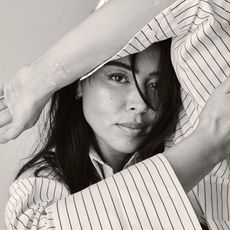 Lauren Chan's Collaboration With Universal Standard Is Redefining Luxury
Lauren Chan's Collaboration With Universal Standard Is Redefining Luxury"People look like they feel powerful in these garments."
By Ana Escalante
-
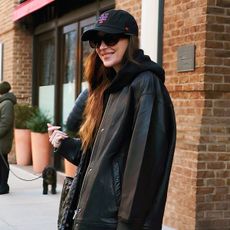 Dakota Johnson Wore the Fashion-Person Legging Outfit That's Perfect for Flights
Dakota Johnson Wore the Fashion-Person Legging Outfit That's Perfect for FlightsLove a good legging outfit trend.
By Allyson Payer
-
 J.Lo Wore a Completely Sheer Top and Controversial Accessory for Her SNL Arrival
J.Lo Wore a Completely Sheer Top and Controversial Accessory for Her SNL ArrivalIn true J.Lo style.
By Allyson Payer
-
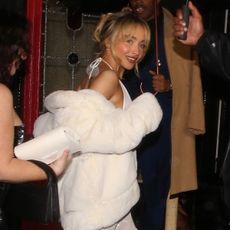 These Are the Only Grammys After-Party Looks You Need to See
These Are the Only Grammys After-Party Looks You Need to SeeFrom Sabrina Carpenter to Selena Gomez.
By Eliza Huber
-
 Mariah Carey Just Snuck Into the Grammys in a Hip-High-Slit Naked Dress
Mariah Carey Just Snuck Into the Grammys in a Hip-High-Slit Naked DressShe skipped the red carpet.
By Erin Fitzpatrick
-
 Miley Cyrus Wore a Level-10 Naked Dress Made of Safety Pins to the Grammys
Miley Cyrus Wore a Level-10 Naked Dress Made of Safety Pins to the GrammysShe never misses.
By Grace O'Connell Joshua
